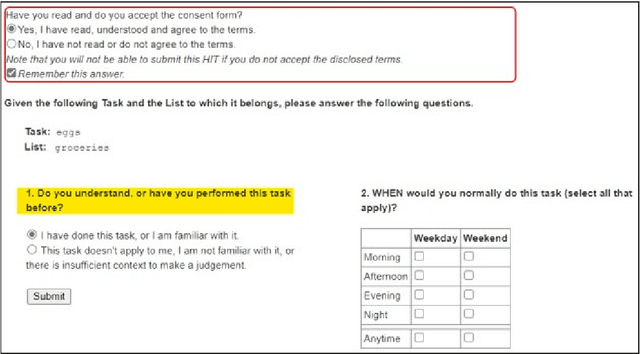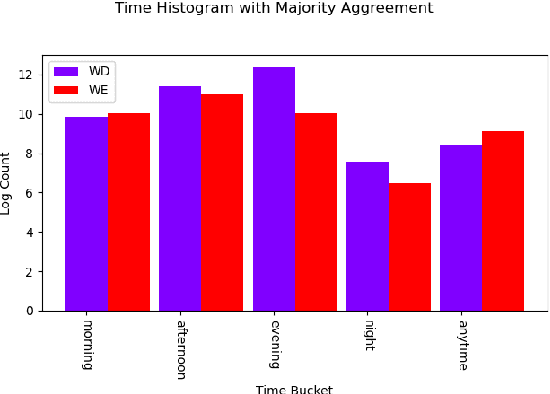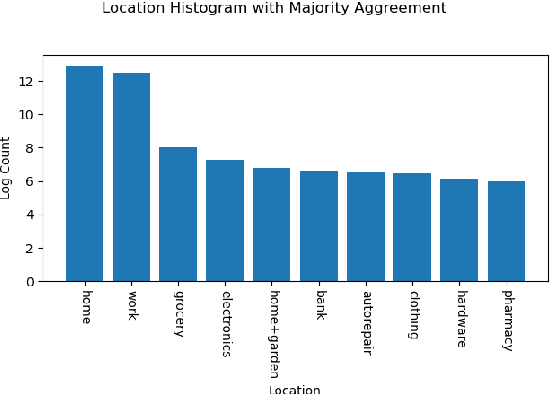MS-LaTTE: A Dataset of Where and When To-do Tasks are Completed
Paper and Code
Nov 12, 2021



Tasks are a fundamental unit of work in the daily lives of people, who are increasingly using digital means to keep track of, organize, triage and act on them. These digital tools -- such as task management applications -- provide a unique opportunity to study and understand tasks and their connection to the real world, and through intelligent assistance, help people be more productive. By logging signals such as text, timestamp information, and social connectivity graphs, an increasingly rich and detailed picture of how tasks are created and organized, what makes them important, and who acts on them, can be progressively developed. Yet the context around actual task completion remains fuzzy, due to the basic disconnect between actions taken in the real world and telemetry recorded in the digital world. Thus, in this paper we compile and release a novel, real-life, large-scale dataset called MS-LaTTE that captures two core aspects of the context surrounding task completion: location and time. We describe our annotation framework and conduct a number of analyses on the data that were collected, demonstrating that it captures intuitive contextual properties for common tasks. Finally, we test the dataset on the two problems of predicting spatial and temporal task co-occurrence, concluding that predictors for co-location and co-time are both learnable, with a BERT fine-tuned model outperforming several other baselines. The MS-LaTTE dataset provides an opportunity to tackle many new modeling challenges in contextual task understanding and we hope that its release will spur future research in task intelligence more broadly.
 Add to Chrome
Add to Chrome Add to Firefox
Add to Firefox Add to Edge
Add to Edge